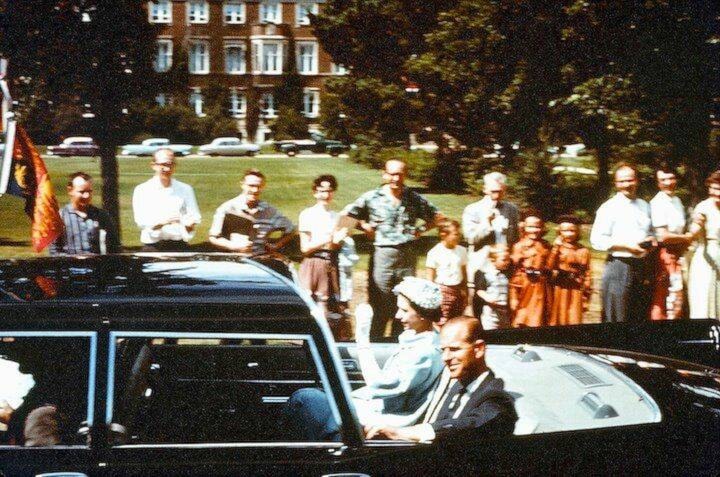On Wednesday, February 6, 1952, George VI, the King of the United Kingdom, as well as Canada, passed away in his sleep at the royal residence at Sandringham House, England. That meant that his eldest daughter, Princess Elizabeth, automatically became the Queen.
Queen Elizabeth has subsequently become, at 95 years of age and 70 years on the throne, the longest-lived and longest reigning current monarch and the oldest and longest serving incumbent head of state.
Unfortunately, Princess Elizabeth was not in the country when her father passed. He had been in poor health for some time and had a cancerous lung removed in 1951. Consequently, at the end of January 1952, Elizabeth and her husband, Prince Philip, embarked on a Royal Tour of Australia and New Zealand, via Kenya, instead of her father and mother. The last time Elizabeth saw her father was when he showed up at the airport to bid her farewell.
After learning of her father’s death, Queen Elizabeth immediately returned to the United Kingdom to be part of the funeral arrangements and to assume her duties as the new monarch. She had been very close to her parents, and it was an exceptionally difficult time. Nevertheless, she had a very strong sense of duty and handled herself with exceptional poise and dignity.
Elizabeth Alexandra Mary Windsor was born on April 21, 1926, in London, England to the Duke and Duchess of York, George and Elizabeth. She was named after her mother, paternal great grandmother and paternal grandmother. She came to be known to close family as Lilibet, based on her very early way of pronouncing her name.
At the time of her birth, she was fourth in line for the throne. Therefore, there was very little expectation that she would ever become a monarch. She had a younger sister, Margaret, born in 1931. The two princesses were educated at home by a governess and tutors.
She was a bright student and became totally fluent in French. She also came across as very orderly with a strong sense of responsibility and duty.
The world for the Yorks took a dramatic shift in 1936 after the passing of King George V. His eldest son Edward ascended to the throne as King Edward VIII. However, before the end of the year, Edward abdicated to marry a twice-divorced American, Wallis Warfield Simpson. That made the Duke of York (George V’s second son) the new King (George VI), Princess Elizabeth consequently became the first in line to the throne. Several referred to them as the “reluctant Royals.”
What is often overlooked is that Princess Elizabeth served in the Second World War. She was a member of Auxiliary Territorial Service, training as a driver and mechanic. When the war in Europe ended in May 1945, Elizabeth and Margaret anonymously went out into the vast crowds to experience more directly “the tide of happiness and relief.”
Princess Elizabeth met her future husband, Prince Philip of Greece and Denmark, in the 1930s. It is said that Elizabeth was quite smitten. A romance developed over the war years. In 1947, after Elizabeth turned 21, their engagement was announced. Because of the lingering devastation of the war, Elizabeth used ration coupons to buy the material for her wedding gown. The ceremony took place on November 20, 1947, in Westminster Abbey.
A province-wide school holiday was declared in Alberta on the day of the wedding.
Philip was named His Royal Highness, the Duke of Edinburgh. There was initially an issue of the family name which would be used after the Queen’s accession to the throne. Some suggested Mountbatten after Philip’s family name. Philip himself suggested the House of Edinburgh. However, in the end, the Royal Family’s existing name House of Windsor was retained.
In 1948, the couple had their first child, Charles, followed by Anne, Andrew, and Edward.
The Queen always has had a strong attachment to Canada, and has made more than 20 official visits here, including one in 1951, when she stood in for her father. She has made six official visits to Alberta, including one to Red Deer in June 1990, when she officially opened the Paediatrics Ward at the Red Deer Regional Hospital.
Red Deer historian Michael Dawe’s column appears Wednesdays.
